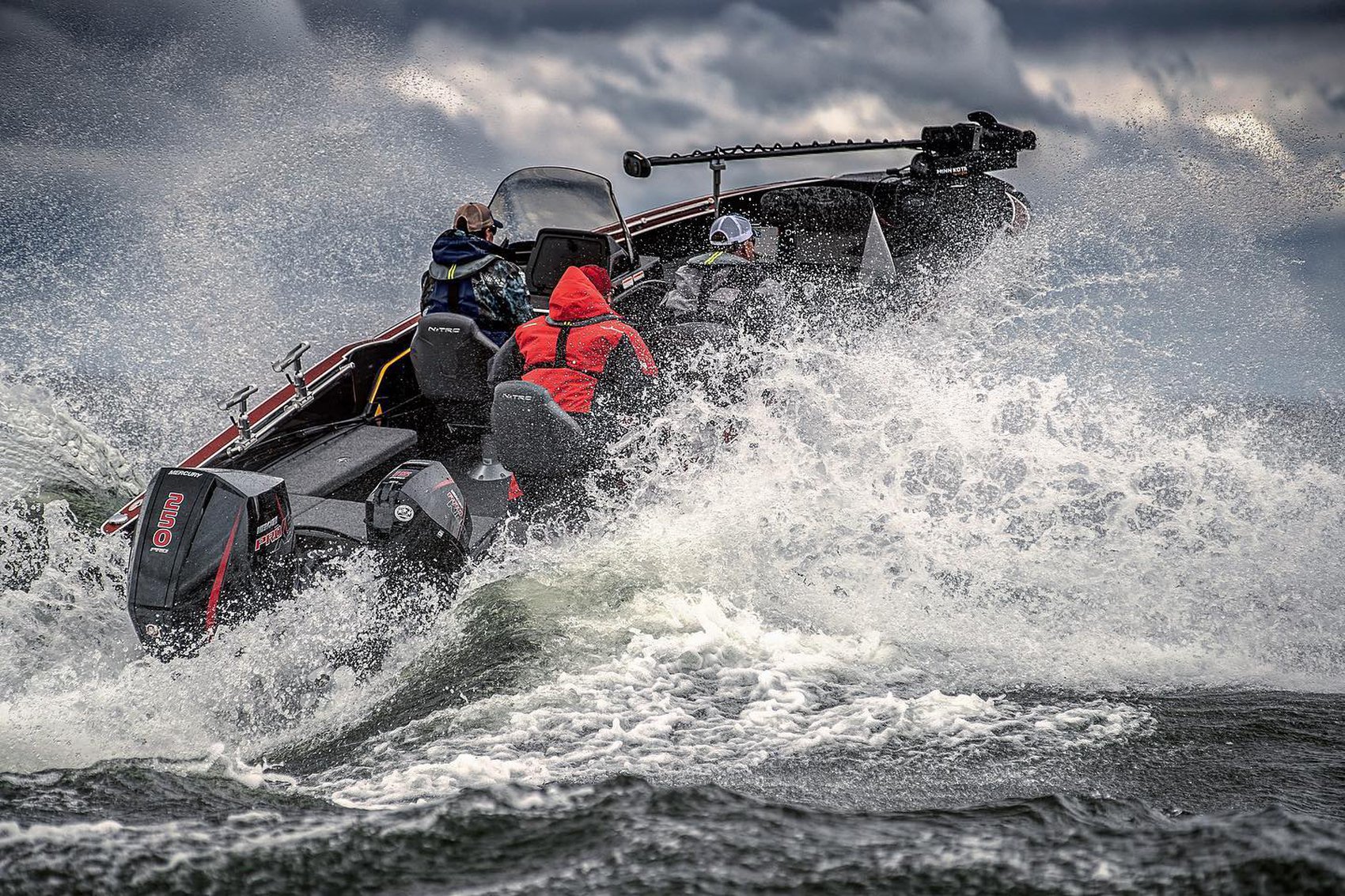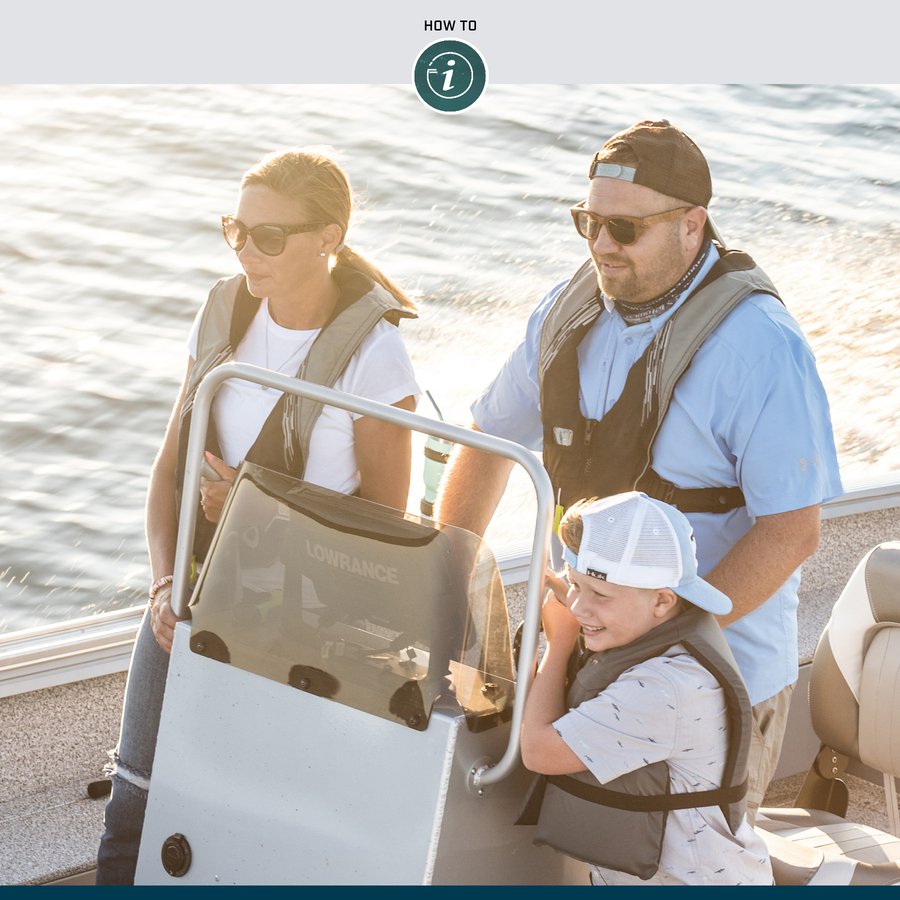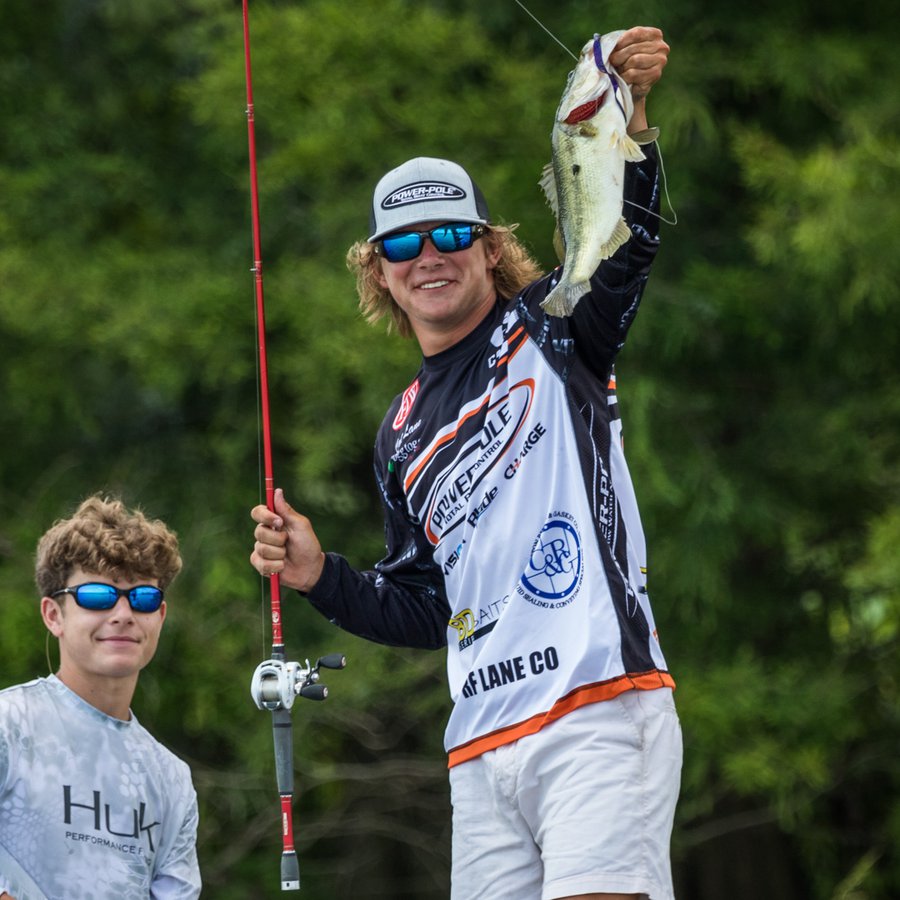
[Individuals interviewed for the article below provide recommendations on boating equipment and driving technique to use in rough water. These recommendations are solely the opinions of the individuals quoted. They may or may not reflect the guidance or recommendations of Mercury Marine regarding the operation of Mercury products.]
Tournament competitors are among those who most definitely do not consider themselves to be “fair-weather” anglers. Whether going after saltwater species or bass, crappie or walleye, tournament anglers are always ready to launch. So long as conditions are determined safe by the tournament director, these anglers are going fishing.
In conversations with professionals and weekend-tournament anglers alike, harrowing stories about rough water are common. Rough water appears to follow tournament schedules around!
Oftentimes, afternoon conditions on the water can get dicey. Waves build during the day and, as weigh-in time draws near, anglers often find themselves facing a rough-water run back to the weigh-in site.
When Adam Schmitt of Kewaskum, Wisconsin, fished the Mercury National Walleye Tournament in 2017, the weather got rough. The waves stacked up from southwest winds and got very close to each other, as he recalled.
Schmitt was running a Triton 206 Fishunter powered by a 2018 Mercury 250hp Pro XS.
“It got ‘sporty’ out on Lake Winnebago that day,” he said jokingly. “We were running the whole length of the lake. We were fishing up north of Oshkosh and decided to come back earlier, so we weren’t completely racing the clock back.”
“It was one of those days where, if it weren’t a tournament, we probably would have left the boat on the trailer.”
Tournaments can separate the fair-weather anglers from the diehards. They’re a constant proving ground for equipment, be it boats, rods, reels, lines or, of course, motors.
Major League Fishing Pro and television host Timmy Horton of Muscle Shoals, Alabama, has put Mercury outboards to the test for more than 20 years. He’s seen some rough days on the water and has some valuable boating tips for running in rough water.
“I would say it is really important to plan ahead and look at the forecast,” he recommends. “If at all possible, launch in an area of the lake that is more protected (based on wind direction). But, for tournaments, the location of the launch is not the angler's call.”
Successfully dealing with a rough water situation begins before the boat is ever launched, according to the host of Timmy Horton Outdoors.
The Mercury 250hp Pro XS mounted to Horton’s Nitro Z21 is rigged with a hotfoot gas pedal.
“A hotfoot is a necessity in rough water,” Horton asserted. “Think about this: If you are in rough water and have to take your hand off the wheel to adjust the gas and are giving it gas back and forth, that’s an impossible thing to do. With the hotfoot, all of the throttle control is with your foot.”
Horton recommends having “blinker-style” tabs by the steering wheel for the motor and jack plate trim features. “They keep you from having to take your hands off the wheel,” he said.
“Check the bolts on your jack plate before and after. When running in rough water, I like to lower my jack plate. This will keep the nose of the boat down lower for running in waves. In really rough water, keep that jack plate lowered all the way down.
“There’s usually a protected side of the lake, so it’s better to take a few minutes to get to that protected side than it is to run the rough water all the way in.
“Always watch the waves. There are going to be one or two that are much bigger. When you see that wave coming, let off the throttle a little bit and turn to the right or left a little bit so that the boat comes at it, not exactly nose-on,” Horton added.
Bassmaster Elite Series Pro John Crews of Salem, Virginia, is a veteran of the bass tournament scene. The 12-time Bassmaster Classic qualifier knows firsthand how tournaments can push anglers and their gear to the limit.
He recalled a moment that his boat appeared airborne over the waves of Grand Lake (Oklahoma) at the 2016 Bassmaster Classic on Day Two. “I had been fishing down by the dam, and the wind was blowing hard out of the north. I needed one more decent bite to be in contention on the final day, so I fished to the very last minute. To get back in time, I was running 60 miles per hour, which is a safe speed at one- to two-foot chop. I rounded the corner, still going 60, and the waves there were up to three feet. They snuck up on me, so, at that point, I needed to navigate the waves. I was in a hurry and pushed the limits of being able to run on top of the waves. Every six or seven waves, the boat would come clean out of the water.”
Crews made it back to the check-in on time that day.
“I do not recommend anyone do this, but this shows what can happen when going along in one- to two-foot waves and then encountering three-foot waves,” he said. “The best option would have been to back off the throttle. Once waves get over the three-foot range, you really have to navigate them.
“You have to slow down and really focus on watching for rogue waves. In three-foot waves, you need to be going with the waves, into the waves, or, as the best option, parallel with the waves. You can’t be going at an angle.”
Looking back, Crews recommended allowing a bit more time to get back, like Adam Schmitt was able to do at the Walleye Weekend.
With so many nerve-racking tales about the hazards of rough water, many anglers underscore the importance of key safety equipment that is nearly always mandatory in fishing tournaments: an emergency stop switch attached to a properly fitting life jacket. For scenarios where worse comes to worst, the recently introduced 1st Mate Safety and Security System, compatible with Mercury SmartCraft-enabled marine engines, can provide life-saving assistance. 1st Mate entails the integrated use of an intelligent engine hub, wearable devices and a mobile app to provide boater-overboard alerts and distress messaging. The system also provides functionality for engine-theft deterrence. Learn more at www.1stMate.com.




















